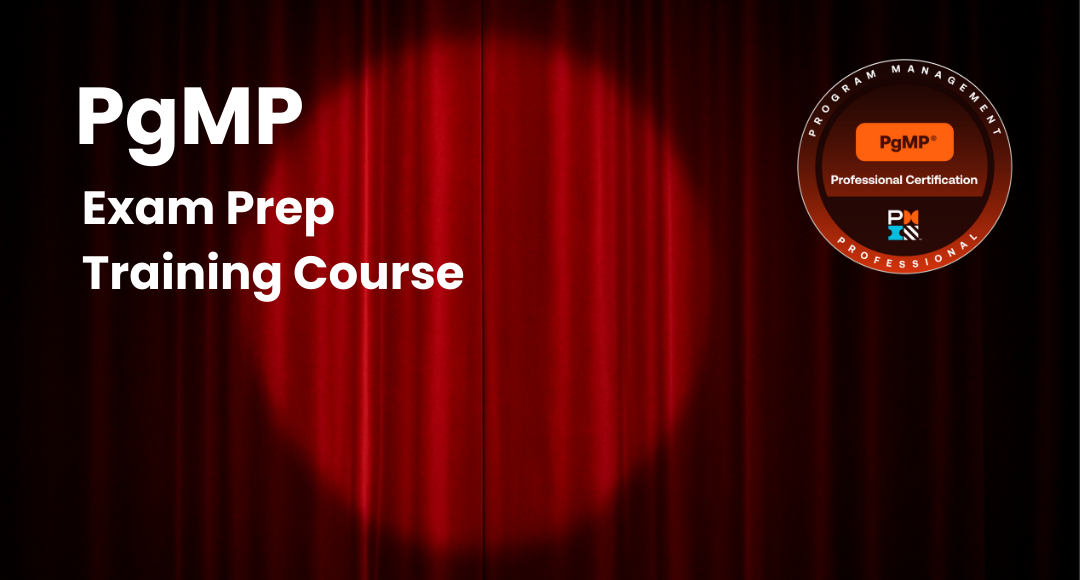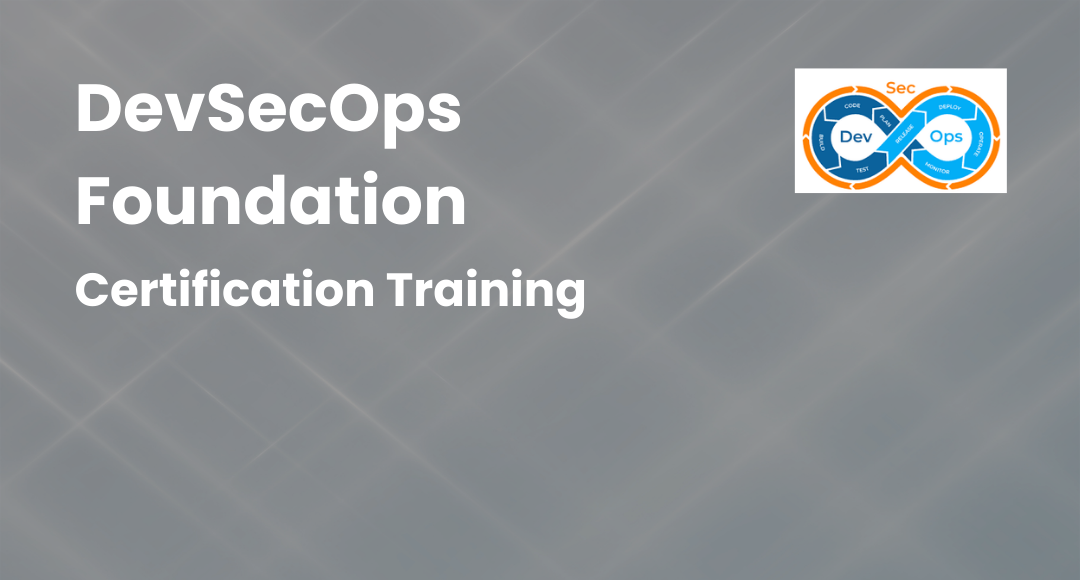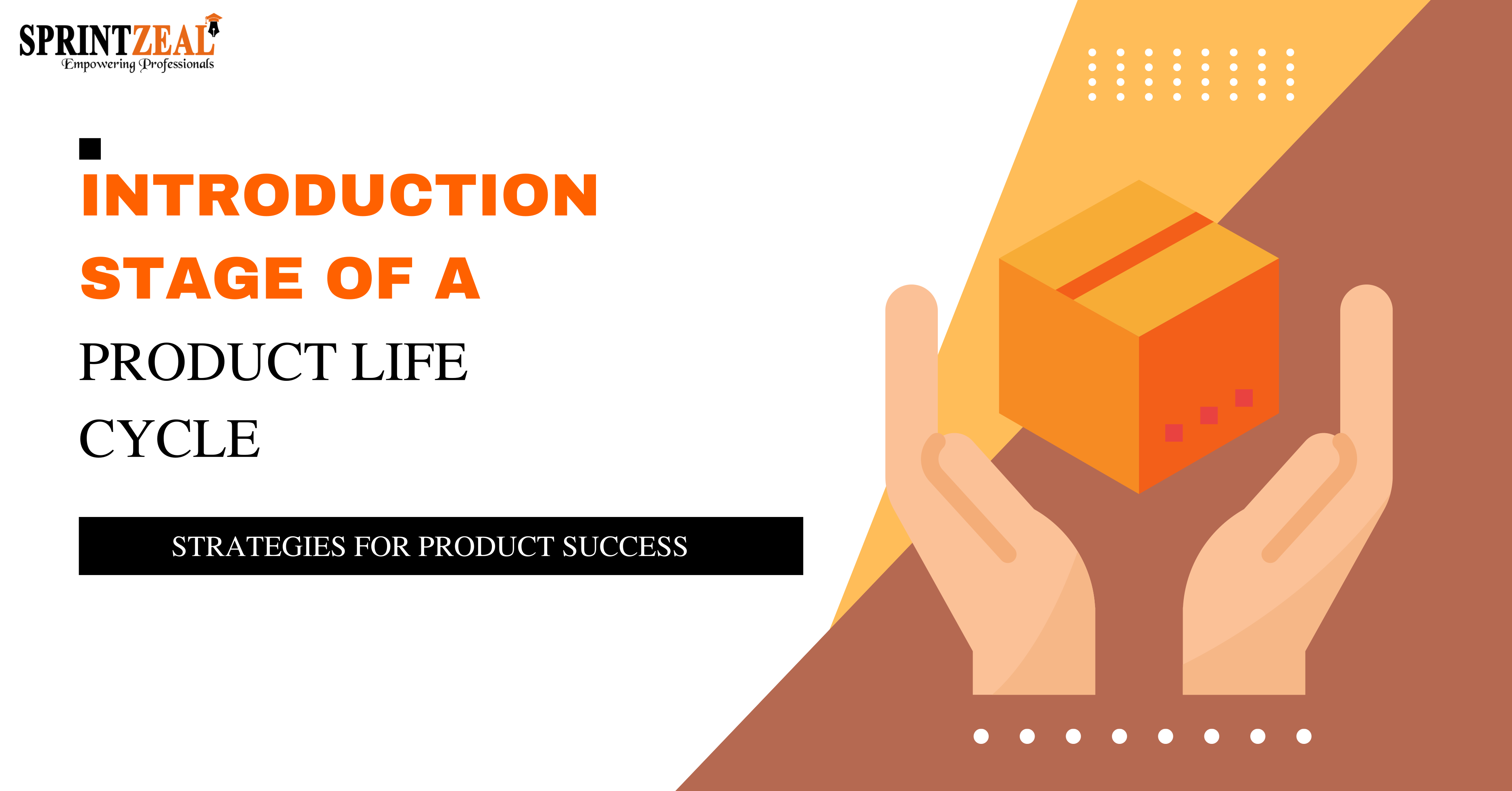DMAIC Methodology - The Ultimate Guide
-
 By Sushmith
By Sushmith - Published on Oct 29 2024

Table of Contents
- What Is DMAIC? An Overview
- Why the DMAIC Process?
- How to Use the DMAIC Methodology
- Before Starting DMAIC: Select a Good Project
- The 5 Phases of DMAIC | DMAIC Methodology and Phases
- Common Mistakes to Avoid when Using Six Sigma DMAIC Methodology
- Tools Used for DMAIC
- DMAIC Process with Lean Six Sigma Certification Training
- FAQs about Six Sigma and DMAIC Approaches
- Summary
What Is DMAIC? An Overview
The DMAIC methodology stands as an example of structured quality for the process improvement and quality enhancement for businesses using Lean Six Sigma for Quality Management. This approach has been widely adopted across industries to achieve improvements in performance and reduce defects.
DMAIC stands for "Define, Measure, Analyze, Improve, and Control." This powerful framework for process improvement and quality management begins with the application of the DMAIC Methodology. The subsequent phases involve data gathering and analysis to identify root causes, followed by implementing improvements and establishing controls for sustainability.

DMAIC is favored for its structured, data-driven approach, enabling organizations to enhance consistency, reduce costs, satisfy customers, boost efficiency, and drive innovation. First, let's understand why DMAIC is crucial in the world of quality management and process improvement.
Why the DMAIC Process?
The DMAIC Process is a vital tool in the domain of quality management and process improvement. Following are a few important concepts:
Structured Problem Solving
One of the crucial reasons organizations adapt DMAIC is its structured problem-solving approach. It provides a clear path to follow when tackling complex issues. This structure ensures that no critical steps are missed in the quest for improvement. Instead of resorting to guesswork or implementing quick fixes, DMAIC guides teams through a well-defined process, increasing the probability of sustainable solutions.
Data-Driven Decision Making
In today's digital world, the ability to make data driven decisions is crucial. DMAIC places a strong emphasis on data collection and analysis. By gathering and analyzing data at each stage of the process, organizations can make evidence-based decisions. This data-driven approach not only leads to more accurate problem identification but also helps in sharing the impact of improvements, making it easier to justify investments.
Focus on Root Cause Analysis
One common pitfall in problem-solving is addressing symptoms rather than root causes. DMAIC, especially in its "Analyze" phase, encourages organizations to dig deep and identify the underlying issues. This emphasis on root cause analysis ensures that improvements are substantive and lasting, rather than superficial fixes that lead to recurring problems.
Alignment with Six Sigma and Lean Principles
Many organizations have already adopted Six Sigma and Lean principles to enhance efficiency and reduce defects. DMAIC seamlessly aligns with these methodologies, making it a natural choice for organizations that have already embraced these quality management approaches. It provides a systematic way to apply Six Sigma and Lean principles in practice.
How to Use the DMAIC Methodology
The DMAIC methodology is a structured approach to process improvement. In the "Define" phase, the problem is identified, objectives are set, and project scope is determined. The "Measure" phase involves collecting data and establishing a baseline, while the "Analyze" phase delves into root cause analysis. In the "Improve" phase, solutions are generated, tested, and implemented, and the "Control" phase ensures sustainability through monitoring, documentation, and training.
DMAIC is a data-driven, systematic approach that aligns with Six Sigma and Lean principles, fostering continuous improvement and enhancing customer satisfaction. DMAIC is also an iterative process that not only solves immediate issues but also cultivates a culture of continuous improvement within organizations.
An effective complementary strategy in this domain is healthcare outsourcing, where specialized external providers support elements like data analysis in the Measure phase or process optimization in Improve—helping organizations scale improvements without added internal overhead.
To effectively use DMAIC, it is essential to follow a step by step approach for an effective application.
Before Starting DMAIC: Select a Good Project
Selecting the right project also plays a vital role in the process of implementing DMAIC methodology. It’s essential to ensure that the project you choose is not only worthy of your time and resources but also aligned with your organization's strategic goals. Here's how you can select a good DMAIC project:

Strategic Alignment
Assess project alignment with organizational strategy, addressing pain points, KPIs, and long-term goals. Aligned projects gain support and resources.
Define the Problem
Define the problem or opportunity using a SMART (specific, measurable, achievable, relevant, and time-bound) statement. Consider its impact on stakeholders and the organization.
Feasibility
Evaluate project feasibility, including data, resources, and expertise availability. Anticipate and plan for potential roadblocks and challenges in the DMAIC process.
Impact and Benefit
Estimate project impact: cost savings, efficiency, product quality, and customer satisfaction. Clear benefits justify project investment.
Data Availability
Ensure relevant, accessible, and high-quality data for DMAIC methodology. Insufficient data hampers progress; verify data sources and collection capabilities.
By carefully selecting a good DMAIC project, you set the stage for a successful process improvement journey. Keep in mind that not all projects are suitable for DMAIC. Now, let’s dive deep into the details of DMAIC Methodology and its each phase.
The 5 Phases of DMAIC | DMAIC Methodology and Phases
Now that the primary step to considering a DMAIC project is taken care of, lets us now explore the core methodology of DMAIC. The following is a brief breakdown of each phase of the 5 DMAIC Phases:
1. DMAIC Define Phase
The primary goal of the "Define" phase is to define the problem or opportunity for improvement. This phase sets direction for the entire DMAIC process.
Key Activities:
- Problem Definition: Craft a precise problem statement that outlines the issue to be addressed.
- Project Objectives: Define measurable objectives that align with the problem statement.
- Scope Definition: Determine the boundaries of the project to avoid scope creep.
- Stakeholder Identification: Identify all relevant stakeholders and their roles.
2. Measure
The "Measure" phase focuses on gathering data and establishing a baseline to understand the current state of the process.
Key Activities:
- Data Collection: Collect data related to the process using appropriate measurement methods.
- Metric Selection: Choose key metrics and performance indicators that align with project objectives.
- Data Analysis Tools: Utilize statistical tools and techniques to analyze and summarize the data.
Baseline Creation: Create a baseline to represent the current performance level.
3. Analyze
In the "Analyze" phase, the emphasis is on identifying the root causes of the problem or inefficiencies within the process.
Key Activities:
- Root Cause Analysis: Investigate potential causes of the identified problem using techniques like Fishbone diagrams, 5 Whys, or Pareto analysis.
- Hypothesis Testing: Formulate hypotheses about the root causes and test them to confirm their validity.
- Data Validation: Ensure data accuracy and reliability for sound analysis.
- Data Visualization: Use visual representations to communicate findings effectively.
4. Improve
The "Improve" phase is where solutions are developed and implemented to address the root causes identified in the previous phase.
Key Activities:
- Solution Generation: Brainstorm and generate potential solutions or improvements.
- Pilot Testing: Test selected solutions on a smaller scale to validate their effectiveness.
- Implementation: Roll out the approved changes across the entire process or organization.
- Monitoring and Adjusting: Continuously monitor the improvements and make necessary adjustments.
5. Control
The final phase, "Control," focuses on sustaining the improvements achieved and preventing regression.
Key Activities:
- Monitoring Systems: Establish systems and processes to monitor the ongoing performance of the improved process.
- Documentation: Document the new processes, procedures, and best practices.
- Standardization: Ensure that the improvements are standardized and consistently applied.
- Training and Communication: Provide training and communicate changes to relevant stakeholders.
Throughout the DMAIC process, it is crucial to adapt data-driven approaches implementing using statistical tools and techniques. Each phase creates a structured improvement cycle by building upon the pervious phase.
Objectives of DMAIC Methodology
As we proceed exploring the DMAIC methodology, it's again crucial to understand the objectives that it aims to achieve. DMAIC isn't just a series of steps; it's a strategic framework designed to deliver tangible results in process improvement. Let's understand the key objectives of DMAIC:

1. Problem Identification and Definition
DMAIC's first objective: identify, define, and communicate the problem or opportunity for clarity and targeted solutions.
2. Data-Driven Decision Making
DMAIC emphasizes data collection, analysis, and informed decision-making. Data serves as the compass for improvement, replacing intuition and anecdotal evidence.
3. Root Cause Analysis
DMAIC's key goal: uncover root causes, not just symptoms, to eliminate underlying process issues. Long-lasting improvements result from addressing root causes.
4. Process Optimization
DMAIC aims to optimize processes for peak performance: streamline, reduce variation, enhance efficiency. Results in better quality, reduced waste, and cost savings.
5. Continuous Improvement
DMAIC fosters a culture of continuous improvement, with its iterative approach ensuring ongoing efforts to refine processes and maintain high performance levels, even as circumstances change.
6. Standardization
DMAIC emphasizes standardization: effective documented improvements ensure consistency, prevent regression, and enable future replication of success.
Understanding these objectives is crucial for successful implementation of DMAIC. Each phase of the methodology serves to satisfy these objectives, and together they form a comprehensive approach to process improvement and quality management. Let’ now explore how the knowledge to apply these objectives benefit the DMAIC methodology effectively.
Benefits of DMAIC: Why It’s Needed
DMAIC is not just a hype. Its potential is not noticed until after the implementation of this methodology into your organization. Understanding the benefits of DMAIC will highlight its relevance and importance in process improvement and quality management.
- Structured Problem-Solving
One of the primary benefits of DMAIC is its structured problem-solving approach. It provides a clear and systematic path for organizations to follow when tackling complex issues. This structured methodology ensures that critical steps are not overlooked and that the problem-solving process is efficient and effective.
- Data-Driven Decision-Making
In today's data-driven world, the ability to make informed decisions is paramount. DMAIC places a strong emphasis on data collection, analysis, and interpretation. This data-driven approach ensures that organizations base their decisions on factual information, reducing the risk of making decisions based on intuition or incomplete information.
- Customer Satisfaction
Customer satisfaction is a critical benefit of DMAIC, particularly in customer-centric industries. By meeting or exceeding customer expectations through improved processes and products, organizations can build customer loyalty and gain a competitive edge.
- Enhanced Product or Service Quality
Improving processes and reducing defects often leads to enhanced product or service quality. This, in turn, can result in higher customer satisfaction, increased customer loyalty, and a stronger competitive position in the market.
- Alignment with Strategic Goals
DMAIC projects are typically selected based on their alignment with an organization's strategic goals. This ensures that process improvement efforts are directed toward achieving key objectives and driving the organization forward.
- Cost Reduction
Reducing costs is a common objective of DMAIC projects. By eliminating waste, minimizing defects, and optimizing processes, organizations can achieve significant cost savings. These savings can be reinvested in further improvements or contribute to higher profitability.
Common Mistakes to Avoid when Using Six Sigma DMAIC Methodology
Despite the DMAIC methodology being a powerful tool, there are a few common mistakes that organizations must be aware of to ensure successful implementation. Avoiding these mistakes helps maximizing the benefits of DMAIC. Let's explore a few mistakes and their solutions:
- Lack of Top-Down Support
Mistake: One of the most common mistakes is embarking on DMAIC projects without strong leadership support from top management.
Solution: Ensure that top management is fully committed to the DMAIC process. Their support provides the necessary resources, removes obstacles, and demonstrates the importance of the initiative to the entire organization.
- Poorly Defined Problem Statements
Mistake: Initiating DMAIC projects with vague or poorly defined problem statements can lead to confusion and ineffective problem-solving.
Solution: Invest time in crafting clear, specific, and measurable problem statements. Use tools like the "5 Whys" technique to dig deeper and uncover the root causes.
- Skipping the "Measure" Phase
Mistake: Rushing through or neglecting the "Measure" phase can result in inaccurate baseline data and flawed analysis.
Solution: Give the "Measure" phase the attention it deserves. Ensure that data collection methods are reliable, and baseline data accurately reflects the current state of the process.
- Ignoring Stakeholder Involvement
Mistake: Failing to involve key stakeholders, including employees who work directly with the process, can lead to resistance and implementation challenges.
Solution: Engage stakeholders from the outset. Their input is invaluable for understanding the process intricacies and gaining buy-in for proposed improvements.
- Overlooking Data Quality
Mistake: Using incomplete or inaccurate data for analysis can lead to incorrect conclusions and ineffective solutions.
Solution: Prioritize data quality. Verify data sources, ensure accuracy, and address any gaps or inconsistencies before analysis begins.
- Rushing the "Analyze" Phase
Mistake: The "Analyze" phase requires careful examination of data and root cause analysis. Rushing through this phase can lead to missed insights.
Solution: Allocate adequate time for thorough analysis. Use data visualization tools and techniques to aid in identifying patterns and root causes effectively.
- Neglecting the "Control" Phase
Mistake: After implementing improvements, some organizations neglect the "Control" phase, which can lead to regression and loss of gains.
Solution: Prioritize the "Control" phase to ensure that the improvements are sustained. Establish monitoring systems, document processes, and provide ongoing training.
- Focusing Solely on Tools
Mistake: Relying solely on DMAIC tools without fostering a culture of continuous improvement can limit the methodology's impact.
Solution: Emphasize both the tools and the mindset. Encourage employees to embrace a culture of continuous improvement where they actively seek opportunities for enhancement.
Avoiding these common mistakes ensures organizations success with the implementation of the DMAIC methodology. DMAIC is a powerful approach for driving process improvements and achieving strategic goals when applied correctly and with careful consideration of such potential pitfalls.
Tools Used for DMAIC
The DMAIC methodology relies on a range of tools and techniques to facilitate each phase of the process. These tools are instrumental in gathering data, analyzing processes, identifying root causes, and implementing improvements. Let's explore some of the key tools commonly used in each phase of DMAIC:

- Define Phase Tools
- Project Charter: A project charter is a document that formally authorizes the DMAIC project. It outlines the project's scope, objectives, team members, stakeholders, and timelines. It serves as a reference point throughout the project.
- SIPOC Diagram: A SIPOC (Suppliers, Inputs, Process, Outputs, Customers) diagram provides a high-level view of the process, highlighting its key components and relationships. It helps in understanding the process context.
- Measure Phase Tools
- Check Sheets: Check sheets are simple data collection tools used to tally and record the frequency of specific events or defects. They help in gathering data systematically.
- Pareto Chart: A Pareto chart is a bar chart that displays data in descending order of frequency or importance. It's useful for identifying the most significant issues to address first.
- Control Charts: Control charts are used to monitor process stability over time. They help distinguish between common cause and special cause variation.
- Analyze Phase Tools
- Fishbone Diagram (Ishikawa or Cause-and-Effect Diagram): This tool helps in identifying potential causes of a problem by categorizing them into major categories, such as people, process, equipment, and materials.
- 5 Whys Analysis: The 5 Whys technique involves asking "Why?" repeatedly to delve deep into the root causes of a problem. It helps in uncovering underlying issues.
- Scatter Diagram: Scatter diagrams are used to explore relationships between two variables. They can reveal patterns or correlations that may not be immediately apparent.
- Improve Phase Tools
- Brainstorming: Brainstorming sessions involve generating a large number of ideas or solutions to a problem. It encourages creativity and diverse thinking.
- Failure Mode and Effects Analysis (FMEA): FMEA is a structured approach for evaluating the potential failure modes of a process, their severity, occurrence, and detectability. It helps prioritize improvements.
- Design of Experiments (DOE): DOE is a statistical technique used to systematically vary factors within a process to identify their impact on the output. It helps optimize processes efficiently.
- Control Phase Tools
- Control Plan: A control plan outlines the steps and procedures to maintain the improvements achieved in the DMAIC process. It includes details on monitoring, measurement, and response plans.
- Statistical Process Control (SPC) Charts: SPC charts, such as control charts and run charts, are used to monitor the stability and performance of a process over time.
- Standard Work: Standard work documents the new, improved procedures and practices. It ensures that everyone follows the standardized process to maintain consistency.
These are just a selection of the many tools available for each phase of DMAIC. The choice of tools depends on the nature of a project, the problem, and the data available. Successful DMAIC projects involve a combination of these tools to gather and analyze data, resulting in effective decision-making.
Limitations in DMAIC Tools
While the DMAIC methodology is a valuable approach to quality management, it's also essential to recognize its limitations and challenges. Understanding these limitations can help organizations optimize their DMAIC projects. Here are some common limitations in DMAIC tools:
1. Data Quality and Availability
Limitation: DMAIC relies heavily on data-driven decision-making. If data quality is poor or if relevant data is unavailable, the effectiveness of the methodology is compromised.
Mitigation Strategy: Prioritize data quality. Verify data sources, clean and preprocess data, and establish robust data collection methods. If data is missing, consider data imputation techniques or explore alternative data sources.
2. Complexity of Tools
Limitation: Some DMAIC tools, such as Design of Experiments (DOE) or advanced statistical techniques, can be complex and require specialized expertise.
Mitigation Strategy: Ensure that the project team includes individuals with the necessary expertise or consider providing training to team members. For simpler projects, choose tools that align with the team's skills and capabilities.
3. Resource Intensive
Limitation: DMAIC projects can be resource-intensive in terms of time, personnel, and financial resources.
Mitigation Strategy: Carefully select projects based on their potential impact and alignment with strategic goals. Conduct a resource assessment before starting a project to ensure that the necessary resources are available.
4. Resistance to Change
Limitation: Resistance to change from employees or stakeholders can pose challenges during the implementation of DMAIC improvements.
Mitigation Strategy: Involve stakeholders from the outset, communicate the benefits of the changes, and address concerns proactively. Engage employees and provide training to ensure a smooth transition.
5. Focus on Symptomatic Solutions
Limitation: Without thorough root cause analysis, DMAIC projects may address symptoms rather than the underlying causes of problems.
Mitigation Strategy: Prioritize root cause analysis in the "Analyze" phase. Use techniques like the Fishbone diagram and the 5 Whys to delve deep into the causes of issues.
6. Cultural Barriers
Limitation: Some organizations may have a culture that is resistant to change or that does not value data-driven decision-making.
Mitigation Strategy: Work on changing the organizational culture by promoting a culture of continuous improvement. Encourage open communication, reward innovation, and lead by example.
Practical DMAIC Examples
To gain a deeper understanding of how the DMAIC (Define, Measure, Analyze, Improve, Control) methodology works in practice, let's explore two practical examples that illustrate how DMAIC can be applied to real-world scenarios.
Example 1: Improving Order Processing in an E-commerce Company
Define:
- Problem: High order processing times leading to customer complaints and delays.
- Objectives: Reduce order processing time by 50% within six months.
- Scope: Order processing from order placement to shipping.
Measure:
- Data Collection: Collect data on order processing times for the past six months.
- Key Metrics: Average order processing time, number of customer complaints related to delays.
Analyze:
- Root Cause Analysis: Use the Fishbone diagram and 5 Whys technique to identify root causes such as inefficient workflows, lack of automation, and staff training gaps.
- Data Analysis: Analyze historical order data to identify patterns and bottlenecks.
Improve:
- Solutions: Implement process improvements, including workflow automation, staff training programs, and optimized order routing.
- Pilot Testing: Test the changes on a small scale to ensure effectiveness.
Control:
- Monitoring: Continuously monitor order processing times and customer complaints.
- Documentation: Document the new procedures and workflows.
- Standardization: Ensure that the improvements are standardized across the organization.
- Training: Provide ongoing training to staff on the new processes.
Example 2: Enhancing Patient Care in a Hospital
Define:
- Problem: High patient readmission rates within 30 days of discharge.
- Objectives: Reduce readmission rates by 20% within one year.
- Scope: The entire patient care process from admission to post-discharge follow-up.
Measure:
- Data Collection: Collect data on patient readmissions and reasons for readmission.
- Key Metrics: 30-day readmission rate, primary causes of readmission.
Analyze:
- Root Cause Analysis: Use the Fishbone diagram and consult with healthcare professionals to identify root causes such as inadequate discharge planning, medication errors, and patient education gaps.
- Data Analysis: Analyze patient data and readmission patterns.
Improve:
- Solutions: Implement improvements such as enhanced discharge planning, medication reconciliation processes, and patient education initiatives.
- Pilot Testing: Test the changes on specific patient groups to assess their impact.
Control:
- Monitoring: Continuously monitor readmission rates and causes.
- Documentation: Document the new care protocols and processes.
- Standardization: Ensure that the improvements are consistently applied across patient care teams.
- Training: Train healthcare staff on the new protocols and communication procedures.
These practical DMAIC examples showcase how the methodology can be effectively applied to specific issues within organizations, whether in the context of improving call center operations or enhancing manufacturing efficiency. DMAIC's structured approach, rooted in data analysis and continuous improvement, empowers organizations to achieve measurable results and address challenges proactively.
DMAIC Process with Lean Six Sigma Certification Training
To ensure that the product’s progression is on the right tracks of succession, it is also essential for organizations to ensure the implementation of adequate process improvement methodologies. This in turn generates a demand for professionals mastering the lean six sigma principles.
Master the DMAIC methodology to solve problems and improve product quality with Sprintzeal's Lean Six Sigma certification courses!
Our comprehensive training programs are designed to equip you with the skills and knowledge needed to excel in static domain of quality management. From beginners to experienced professional, our courses cater to various levels, ensuring that you receive the right training for your needs.
Join thousands of successful Lean Six Sigma practitioners who have transformed organizations through process improvements. Enroll in Sprintzeal's Lean Six Sigma courses today and accelerate your career!
FAQs about Six Sigma and DMAIC Approaches
Q.1 Can DMAIC be used outside of Six Sigma?
Absolutely, DMAIC is a versatile problem-solving methodology that can also be applied outside of the traditional Six Sigma framework. While DMAIC is closely associated with Six Sigma due to its historical roots in quality management, organizations from various industries adopt DMAIC to enhance processes and drive improvements. Here are some scenarios where DMAIC can be effectively used outside of Six Sigma:
- General Process Improvement
- Lean Manufacturing
- Healthcare
- Information Technology (IT)
- Project Management
- Supply Chain Management
Q.2 What Are the Advantages of Using the DMAIC Model?
DMAIC offers numerous advantages for organizations to help enhance quality and achieve strategic objectives. Here are the key advantages:
- Structured Approach to Problem Solving
- Data-Driven Decision Making
- Root Cause Analysis
- Continuous Improvement Culture
- Alignment with Strategic Goals
- Cost Reduction and Efficiency
- Enhanced Quality
- Risk Mitigation
Q.3 Who can benefit from Six Sigma and DMAIC training?
A: Six Sigma and DMAIC training can benefit professionals from various industries, including manufacturing, healthcare, finance, IT, and more. Anyone interested in improving processes, reducing defects, and enhancing decision-making skills can benefit from these methodologies.
Q.4 What are the different Lean Six Sigma belt certifications?
A: Lean Six Sigma offers various belt levels, including Yellow Belt, Green Belt, Black Belt, and Master Black Belt. Each belt level represents a different level of expertise and responsibility in leading and participating in process improvement projects. Visit Sprintzeal.com to know more.
Q.5 Can Lean Six Sigma be applied to non-manufacturing industries?
A: Absolutely! Lean Six Sigma principles and DMAIC can be applied to any industry or sector, including services, healthcare, education, and government. The methodology's versatility makes it applicable across diverse fields.
Q.6 How long does it typically take to complete Lean Six Sigma certification?
A: The duration of Lean Six Sigma certification programs varies depending on the level and training provider. Typically, Yellow Belt programs can be completed in a few days, Green Belt in weeks, and Black Belt in a few months. Master Black Belt certification may take longer due to its advanced nature.
Q.7 Can Lean Six Sigma certification be pursued online?
A: Yes, many accredited training providers offer Lean Six Sigma certification programs online. Online training provides flexibility and allows you to learn at your own pace.
Summary
DMAIC is a powerful tool that offers a structured and data-driven approach to process improvement. It helps organizations identify and address issues systematically, optimize operations, and align with strategic goals. By utilizing a diverse set of tools, DMAIC empowers organizations to avoid common pitfalls.
This blog has further helped you with practical DMAIC examples on how this methodology can be effectively applied to real-world challenges. Additionally, for individuals seeking to master such impactful methodologies, Sprintzeal's Lean Six Sigma certification course is your best choice.
Sprintzeal offers Lean Six Sigma Green Belt and Lean Six Sigma Black Belt certification courses to help equip you with the skills and knowledge needed to excel in project quality improvement. Our expert instructors, with over a decade of experience training professionals, provide top-notch training.
Join our immersive community of learners for shared knowledge of key concepts and to excel in quality management.
Enroll in Sprintzeal's Lean Six Sigma courses today to earn a globally recognized certification.
Subscribe to our Newsletters
Popular Programs
PSM® - Professional Scrum Master Certification
Live Virtual Training
- 4 (75 + Ratings)
- 34k + Learners
Trending Posts
Top Scrum Master Responsibilities 2026 (Updated)
Last updated on Jan 15 2024
Agile Principles Guide
Last updated on Apr 25 2023
Successful Product Strategies for Introduction Stage of Product Life Cycle
Last updated on Oct 19 2023
Unlocking Career Opportunities in Product Management: Your Roadmap to Success
Last updated on Oct 25 2023
DevOps Vs Agile Differences Explained
Last updated on Nov 18 2022
Product Life Cycle Model: A Guide to Understanding Your Product's Success
Last updated on Oct 11 2023
Categories
- Other 67
- Agile Management 60
- Cloud Computing 51
- Project Management 170
- Big Data 59
- Business Management 82
- Digital Marketing 74
- IT Service Management 29
- Programming Language 51
- AI and Machine Learning 69
- IT Security 110
- Quality Management 77
- IT Hardware and Networking 25
- Microsoft Program 4
- Workplace Skill Building 12
- Risk Management 9
- Information Security 8
- Leadership and Management 7
- Corporate Training and Development 1
Trending Now
List Of Traits An Effective Agile Scrum Master Must Possess
ArticleDevOps Vs Agile Differences Explained
ArticleDevops Tools Usage, and Benefits of Development Operations & VSTS
ArticleAgile Scrum Methodology - Benefits, Framework and Activities Explained
ArticleGuide to Agile Project Management 2026
Article10 best practices for effective DevOps in 2026
ArticleGuide to Becoming a Certified Scrum Master in 2026
ArticleWhy Should You Consider Getting a Scrum Master Certification?
ArticleCSM vs CSPO: Which Certification is Right for You?
ArticleAgile Manifesto - Principles, Values and Benefits
ArticleAgile Methodology Explained in Detail
ArticleAgile Project Management Explained
ArticleEverything about Scrum Methodology
ArticleLatest Agile Interview Questions and Answers To Look For In 2026
ArticleScrum Interview Questions and Answers 2026
ArticleTop Scrum Master Responsibilities 2026 (Updated)
ArticleDevOps Engineer Interview Questions - Best of 2026
ArticleDevOps Engineer - Career path, Job scope, and Certifications
ArticleScrum vs Safe – Differences Explained
ArticleCSM vs. PSM - Which Scrum Certification is Better?
ArticleSAFe Implementation Roadmap Guide
ArticleAgile Release Plan Guide
ArticleAgile Environment Guide
ArticleAgile Coaching Guide - Best Skills for Agile Coaches
ArticleAgile Principles Guide
ArticleSAFe Certifications List - Best of 2026
ArticleAgile Prioritization Techniques Explained
ArticleScrum Ceremonies Guide
ArticleProduct Owner Certifications List
ArticleScrum of Scrums Guide
ArticleBusiness Agility Guide - Importance, Benefits and Tips
ArticleWhat is DevSecOps and its Importance
ArticleStakeholder Engagement Levels Guide
ArticleScrum Master Career Path Explained
ArticleScrum Career Path Explained
ArticleDevOps Career Guide 2026
ArticleData Processing - A Beginner's Guide
ArticleScrum Workflow - A Step by Step Guide
ArticleTop Git Interview Questions and Answers [Updated 2026]
ArticleA guide to Agility in cloud computing
ebookProduct Roadmap: An Ultimate Guide to Successful Planning and Implementation
ArticleProduct Life Cycle in Marketing: Essential Strategies for Product’s Success
ArticleProduct Life Cycle Strategies: Key to Maximizing Product Efficiency
ArticleScrum Master Salary Trends in 2026
ArticleProduct Life Cycle Model: A Guide to Understanding Your Product's Success
ArticleWhat is a Product Owner - Role, Objectives and Importance Explained
ArticleSuccessful Product Strategies for Introduction Stage of Product Life Cycle
ArticleUnlocking Career Opportunities in Product Management: Your Roadmap to Success
ArticleSaturation Stage of Product Life Cycle: Complete Guide
ArticleEssential Tools for Agile Project Management 2026
ArticleHow to Write an Executive Summary for a Business Plan?
ArticleImportance of Procurement Management Software in Modern Business
ArticleBest Prompt Engineering Tools to Master AI Interaction and Content Generation
ArticleHow to Select a Rust Development Company with Expertise in Cloud and Embedded Systems?
ArticleMastering Your Sales Funnel to Maximize Every Conversion
Article7 Culinary Business Schools Offering Global Industry Access
ArticleTurning workforce data into actionable insights
ArticleWhat Is a Data Scientist? Salary, Skills, and How to Become One
ArticleProject Manager Job Description: Roles, Responsibilities, and Skills
Article


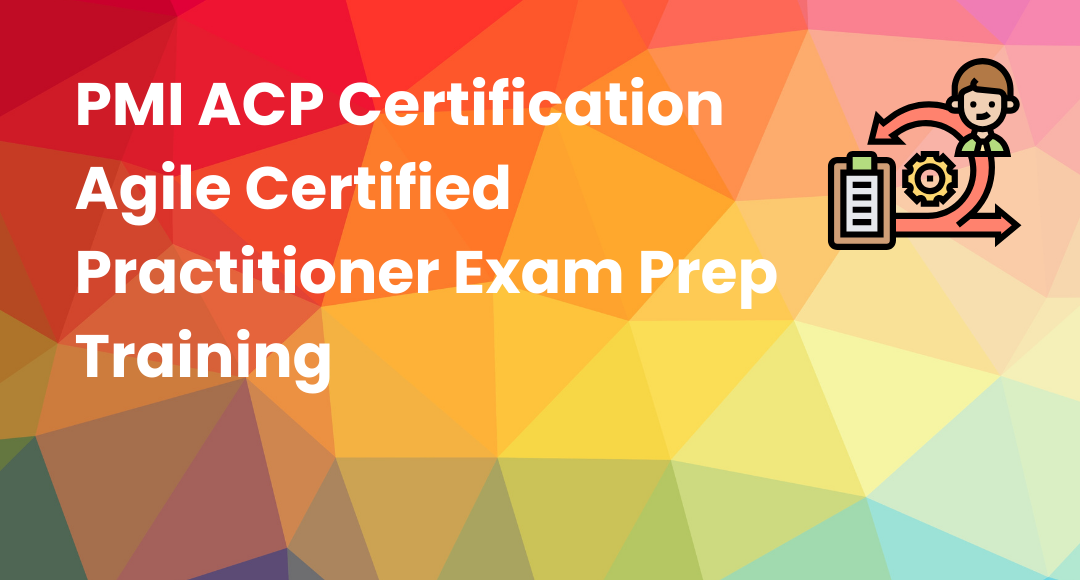

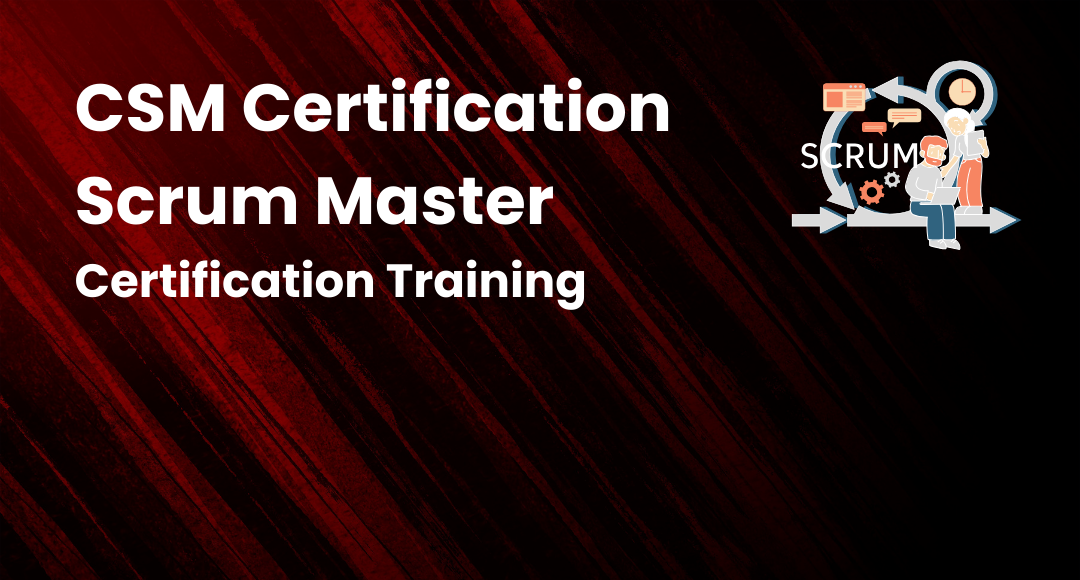
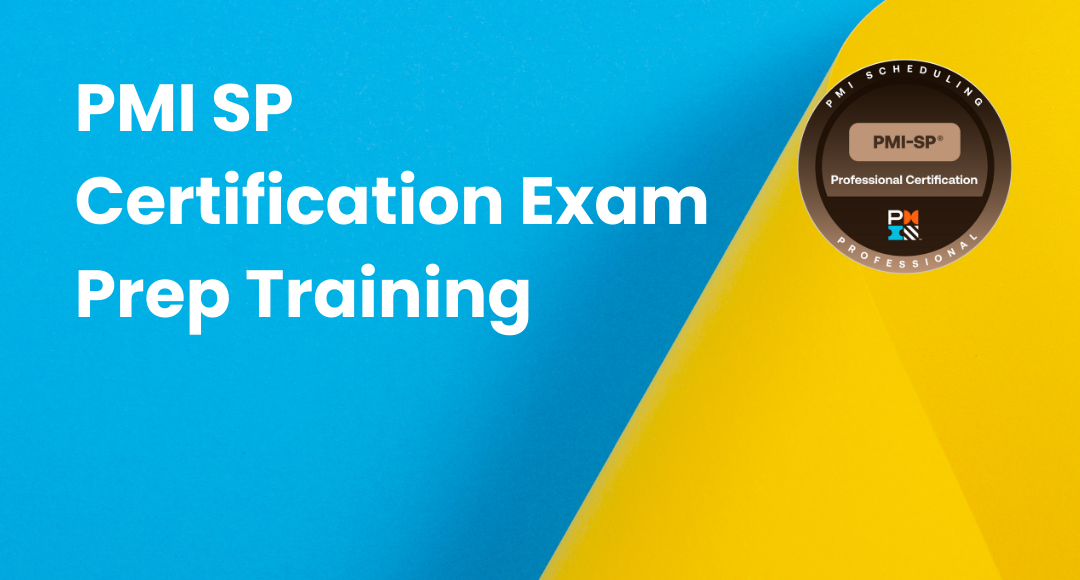

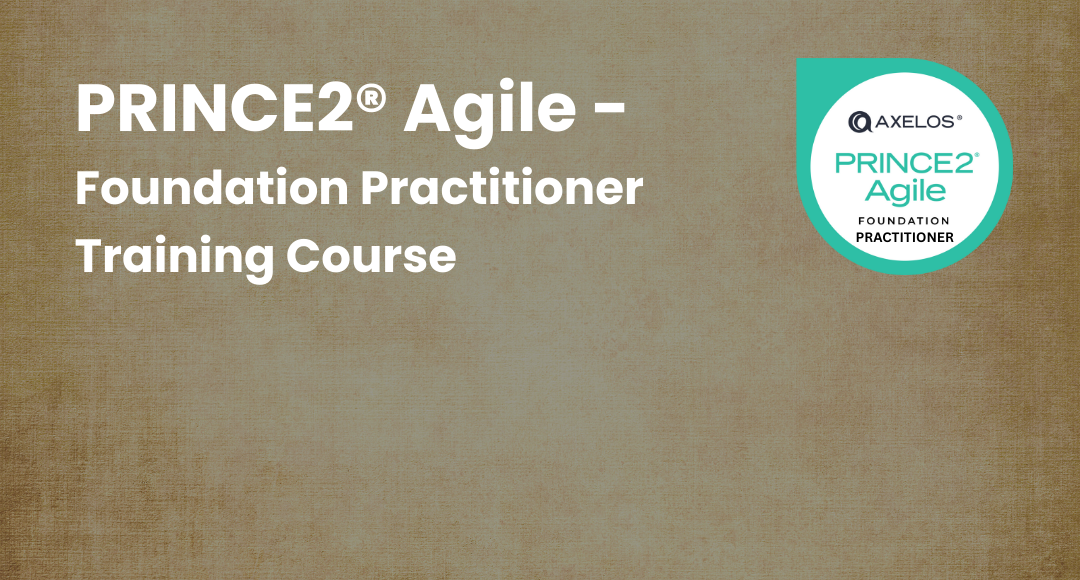
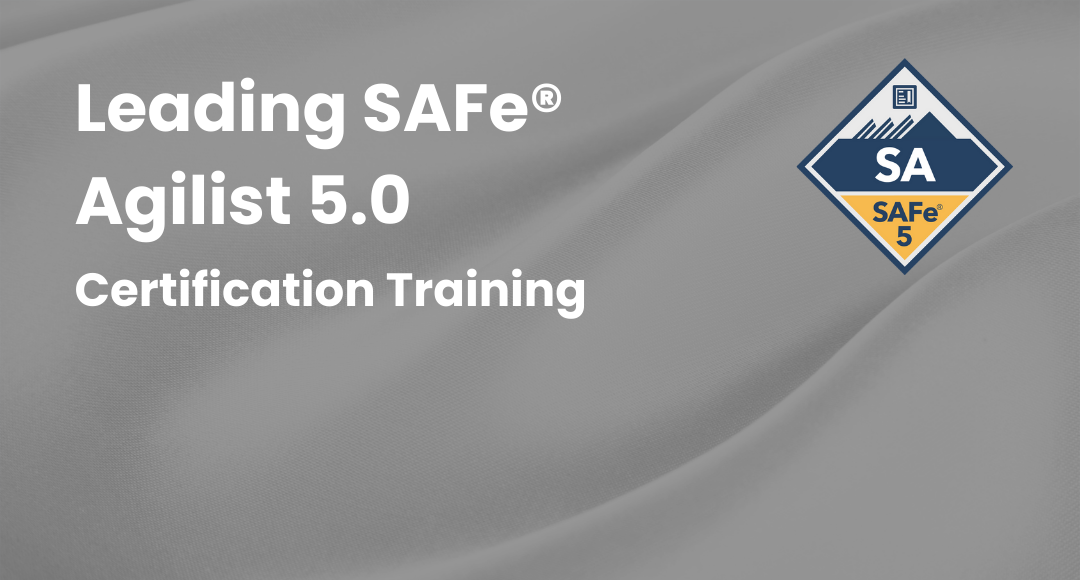
+Certification+Training.png)
